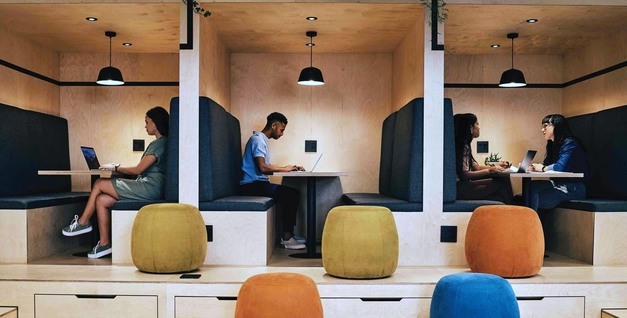Flooring manufacturer Tarkett has published the guide "Principles for Human Conscious Design", providing tools and guidelines for inclusive interior design. Tarkett emphasises that not only physical aspects, such as accessibility, are important when designing a space, but also mental aspects: how users experience a space and how they feel in it.
The arrangement of our environment influences the way we perceive it, navigate through it, interact with it, and process information. Particularly in healthcare, schools, and workplaces, it is important to take this into account. Consider spaces where one can retreat and adaptable furniture and lighting. Tarkett's "Principles for Human Conscious Design" guide presents various solutions to align spaces as effectively as possible with both collective and individual needs.
The importance of inclusive design
When designing a space, a lot of attention is usually paid to physical aspects, such as practical accessibility, while the mental aspect often remains underexposed. People do not all experience and process a space and their environment in the same way. The arrangement of our environment influences the way we perceive it, navigate through it, interact with it, and process information. For some, a noisy work environment with many people may be pleasant, while others prefer a quiet place without distractions. Some of these differences are recognised as specific characteristics, also known as neurodiversity.
Perception of the environment
Experiencing and processing a space can be challenging for hyper- or hyposensitive people. Every second we are exposed to millions of pieces of sensory information, or stimuli. Yet we can only consciously process fifty of them. How we process these impressions is one of the most important aspects that define an individual personality. The report looks closely at people who process these impressions in a different way. ADHD (Attention Deficit Hyperactivity Disorder) and autism are highlighted, but it also zooms in on inclusive designs for people with dementia. They may experience hyper-sensitivity, changing perception, or have trouble with social interaction. It is important that people can occasionally withdraw to rest and that a space feels familiar to everyone.
A comfortable space
Tarkett aims to design spaces for everyone. Designing spaces for everyone while taking into account individual differences can be a challenge, but inclusive design does not have to lead to compromises. It is important to acknowledge that there is a significant overlap between our needs, whether they are neurodiverse or neurotypical. Therefore, Tarkett does not focus one-sidedly on the preferences of a specific group, but applies important criteria, such as one space with one function, simple navigation, and adaptable furniture and lighting. In this way, a space can meet a wider range of requirements without leading to uninspiring spaces. All applicable in commercial environments, schools, universities, and community centres.
More information:
Tarkett
www.tarkett.nl
